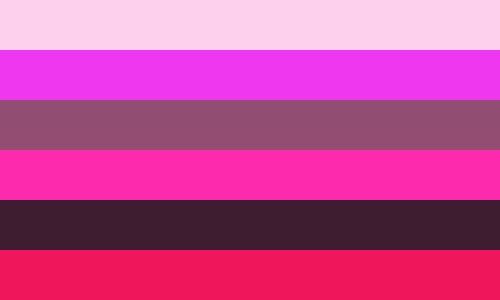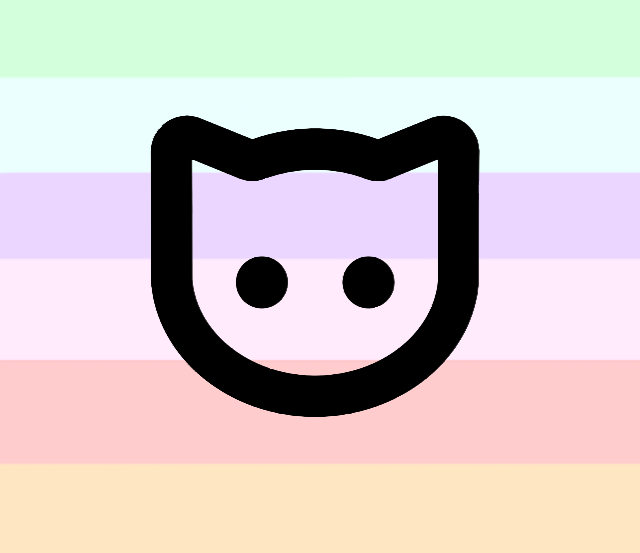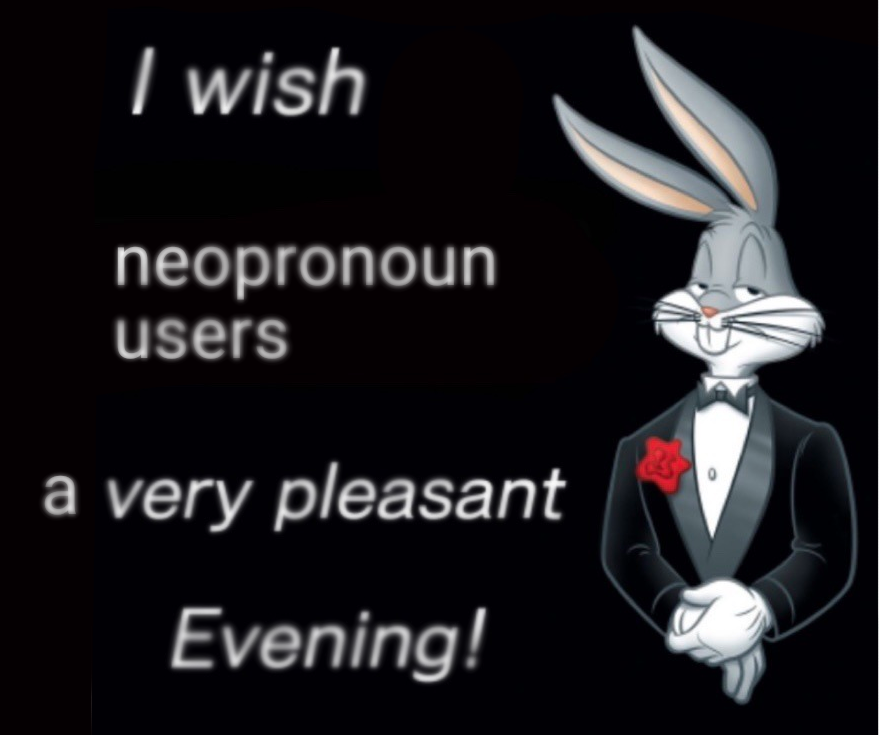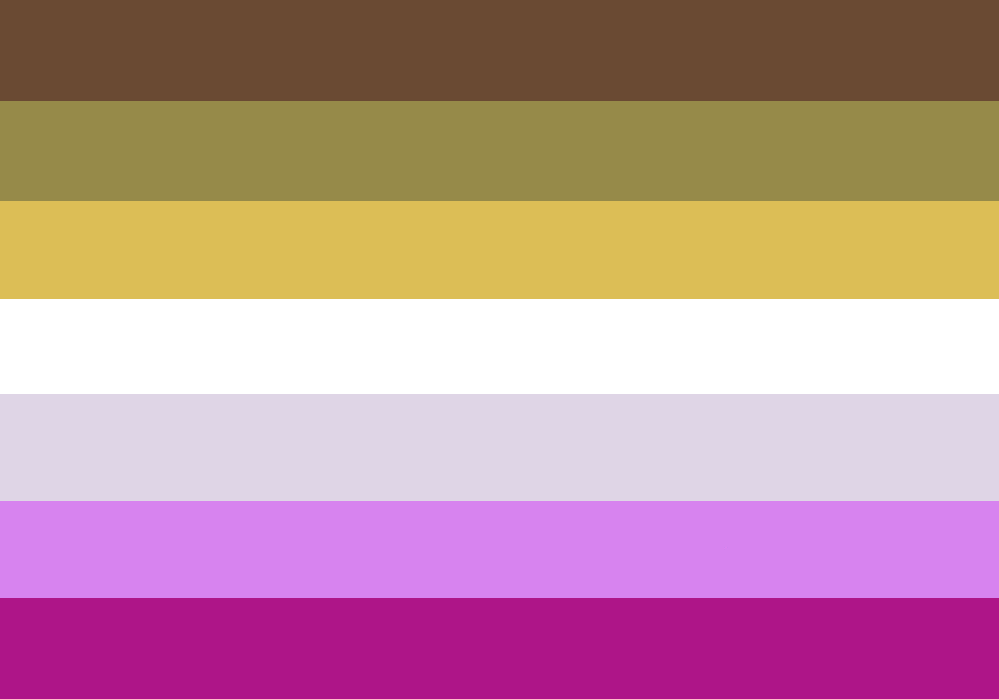"Neopronouns are made up!!!" ah yes, made up pronouns, as opposed to the organic, 100% natural she/he/they pronouns, handpicked from the trees
Ascgender: A term used to describe an identity that ascends the concept of gender. An ascgender person may feel gender doesn’t apply to them, or that their gender is beyond description. The dark purple stripe represents integrity, blue creativity, pale teal is uniqueness, and light yellow purity. The symbol used a a sigil based based from “ASC,” and represents identity beyond gender. The associated pronouns are sce/scer/scenself, pronounced “see/sir/senself.” And yes, it’s pronounced ass gender.
Yonderine: referring to qualities that transcend the concept of gender, being neither masculine, feminine, androgynous, epicene, neutral, agender, aporine, outherine, xenine or any other such quality of gender that exists or will ever come to exist; a sense of self that exists beyond the binary, the nonbinary, the anonbinary and the concept of gender itself.
Etymology
From English, “Yonder”, meaning “at some distance in a direction indicated” + Greek/Latin suffix “-ine”, meaning “of or pertaining to”. Coined by Gent (Gender-Resource), 2020.
The noun form of the term is Yonderinity. One who is Yonderine would be called a Yond. If one is a Yond, it means that they do not participate in the concept of gender because they exist beyond it. Such a person can present in any way they so choose and use any pronouns. Yonderine individuals may have non-gendered connections and attachments to a particular gender or genders. If a “gender” is yonderine, it could be referred to as a Yingender (yondering-in-nature).
Yond-associated Pronouns:
- Subjective: Ul
- Objective: Ul
- Possessive Determiner: Uls
- Possessive Pronoun:Uls
- Reflexive: Ulself
These suggested pronouns are nounself, based upon the Latin preposition, “Uls”, meaning “more than” or “beyond”. The pronouns are pronounced “ool”, “ools” and “oolself”.
Here is a sample text from the Pronoun Dressing Room using Ul/Uls pronouns:
Hello! Today I met a Yond who goes by Aera. Ul has a wonderful personality. That smile of uls really makes me happy. I could talk to ul all day although ul doesn’t talk about ulself much. I wonder if uls day has been wonderful. I hope so!
Flag
With this being the coining post, this is also the first appearance of the flag, which as also created by myself at the same time as the term. The flag consists of seven, solid-colored, horizontal stripes of the same size. From top to bottom, they are brown, olive green, gold, white, silver, lavender and dark magenta. The colors have the following meanings:
- The brown stripe represents existence.
- The olive green stripe represents lack of participation in gender.
- The gold stripe represents the self.
- The white stripe represents what lies beyond the concept of gender.
- The silver stripe represents self-knowledge.
- The lavender stripes represents rejection of gender as a construct.
- The dark magenta stripe represents transcendence of gender.
☙ Aesthete (Gender Identity)
Aesthete is a non-binary gender made by us as a word for our identity. This identity is based off of aestheticism, where the focus is on beauty and what one appreciates more than societal standards and beliefs. Aestheticism itself is considered “art [that] exists for the sake of its beauty alone, and that it need serve no political, didactic, or other purpose”.
Aesthete as a gender identity is someone who is less focused on their gender or what is perceived as their gender and is focused on being whatever they please and looking however they please. Aesthete people generally don’t have a specific way to identify as they can present and feel many ways, but regardless are focused on an identity around being whatever pleases them, both visually and mentally.
Aesthete people also generally like to present in a way that follows this, dressing up and being visually appealing to themselves and others as a way of expressing themselves. Any set of pronouns can be used, but a set of pronouns specific to this gender is ae / aem / aes / aemself.
The flag consists of four colors in total:
Green is a color often used to represent luxury as well as life.
Teal / turquoise is used to represent sophistication, creativity, and the self.
Red represents passion, romance, and a wide variety of intense emotions.
White roses are a symbolism of romance, but white also symbolizes perfection.
Together, the flag is a symbol for pride in oneself and one’s identity and appearance. While fairly egocentric, it emphasizes that our identities and the way we present is for ourselves.




Lovegender - usually a general detachment from gender (at least in a typical sense), where its completely or mostly influenced by your love of love. it can just mean your gender is love, or it can be related to omnique, orientationgender, or other such things- just as long as your gender is defined by love in some way.
additional info:
- can consist of/be used alongside with any genders and orientations (lovegender nonbinary, lovegender transmasc, lovegender lesbian, lovegenderfluid, etc)
- lo/lov/loves/loveself pronouns are most related to lovegender, but any pronouns can be used.
- “love” in this means any type of love, not just romantic/sexual.
- the lovegender symbol contains some gender symbols within a heart to represent the meaning of the term (gender defined by love). the big cross along the center is from the girl symbol, the asterisk-like symbol on the right for nonbinary, and the arrow point for boy. together it looks like an arrow going through a heart to fit the theme of love!
extra definitions:
- omnique - fluid gender and orientation, where youre always gay for who youre attracted to.
- orientationgender - where your gender and orientation are closely tied together or are completely one and the same.
neoprontrans: a term for anyone who both identifies as trans (binary or nonbinary) and uses neopronouns
neopronominal: a term for those who use neopronouns
neoprontrans flag was requested by anon! the first flag is five stripes like both the neopronoun user and trans flags, with colors taken from said flags, and the second uses the same colors but symmetrically in order to emulate the intent of the trans flag!
the third flag is the neopronominal flag, with the central stripes having similar meanings to my other pronominal flags and the outer stripes having similar colors to the neopronoun user flag.

Fluffgender
Don’t know if this is a gender already, but I’ll start explaining.
Fluffgender: A gender related to fluffy things, including animals, objects, etc. The flag is pastel to show how soft the gender is, and the cat symbol represents fluffy animals, objects, etc. The gender is also related to “soft bois/boys” and “soft girls”. The gender is open to anybody of any age, race, sexuality, religion, etc. If somebody is fluffgender, they probably love fluffy things, pastel colors, and are probably a soft boy/girl/person. Fluffgender people are open to any pronouns and for short are called “fluffs”, but if they don’t want to be called one, that’s fine. If you already have a gender but also want to identify as fluffgender, you could. If you want, a pronoun to use if you’re fluffgender could be fluff/fluff’s. If you identify as male or female, if you want, you can be called a fluffboy or fluffgirl. A cute term for non-binary fluffgenders could be non-fluffs. Feel free to use your own flag if you’re fluffgender and don’t like the flag, and feel free to edit or remake the flag!
Anonymous asked:
aren't neopronouns and xenogenders harmful to trans and nonbinary people? it doesn't make sense to me how you can create new sets of pronouns and new gender identities like that. you can't just create a gender. it makes it seem like trans and nonbinary people made up their identities as well. I'm not saying you're cis or you don't have problems understanding your gender--I'm just saying all these extra terms that you make up are unnecessary and don't make much sense to me. have a nice day tho!
neopronouns answered:
the fact that you’ve insulted and invalidated my identity and the identities of most of my followers just because they ‘don’t make much sense’ to you and then have the audacity to say ‘have a nice day tho!’… what the fuck. seriously. i don’t want to sound like an asshole, but i legitimately do not care about your pleasantries when you’re telling me my identity, the identity that it’s taken me years to find the right words for, is made up and harmful.
no, neopronouns and xenogenders do not harm trans and nonbinary people. neopronouns have existed for centuries, and xenogenders are just more specific nonbinary labels. there is no proof that we harm the trans community. transphobia is not caused by trans people, but by the cis people and the cissexist society that continue to foster and promote transphobic views. throwing a smaller group of trans people under the bus for the struggles the wider trans community faces is what’s known as ‘respectability politics’ - i really do recommend you research that concept, as it’s becoming very prevalent in our community today and it’s just causing divides and opening us up to harm from actual transphobes.
when a new gender is coined, it’s not because the person ‘created’ it, but rather because they’ve put a name to a feeling that they and potentially others were already experiencing. new gender terms don’t come out of nowhere; they’re born from someone’s desire for a word to put to a feeling they have. you say this doesn’t make sense to you, and that’s totally okay - you don’t have to understand every identity or why someone might identify as such - but rather than assuming they’re harmful, maybe ask people why they coin the labels they’ve coined. listen to our experiences and see why we find comfort and happiness in microlabels. this community is so welcoming of questions, but framing them in a negative light is not a good way to go about learning things.
as for neopronouns… language is made up. new words are created constantly. people make up words for novels, inside jokes, songs, poems, usernames, nicknames - those of us who use newer neopronouns and/or very niche neopronouns are the same. we’re creating these words because they make us feel comfortable. additionally, there are older neopronouns from decades, even centuries, ago that were coined for many reasons, but many are specifically to fill a gap in the english language. they/them is a completely acceptable singular gender-neutral pronoun, of course, but it also is somewhat ambiguous. pronouns like thon/thons, ey/em, and ze/hir were coined to be only used as singular neutral pronouns, as some people don’t want to use they/them, including myself. you don’t have to know every set of neopronouns, and often you’ll be provided with a basic auxiliary pronoun set if neopronouns are difficult for you to use, but even if they don’t make sense to you, please respect them. you might not find a use in them, but so many people do.
and, yes, you’d better not be saying i’m cis. nobody aside from me has authority over how i identify, especially not a stranger on the internet. i also am not confused about my gender. i understand my gender very well and am confident in the labels i use. you might find the terms i ‘make up’ (coin. they aren’t made up, as i said before, because i’ve coined the words to describe feelings that already existed) unnecessary with regards to your own gender and perceptions thereof, but for those of us who use neolabels, they’re important and useful. we feel happier and more comfortable having specific labels. again, that doesn’t have to make sense to you, but please show us respect and try to listen to us when we explain why we use certain terms.
you seem, despite your negative wordings in this ask, to be genuinely curious in some regard. i really do recommend trying to learn things without approaching the issue like this. instead of saying something is harmful, just say you’re confused. research things like respectability politics, older neopronouns and the function of neopronouns, more common neolabels, and things like that, and try to keep an open mind. you don’t have to understand everything, but at least be respectful, that’s all i ask.




